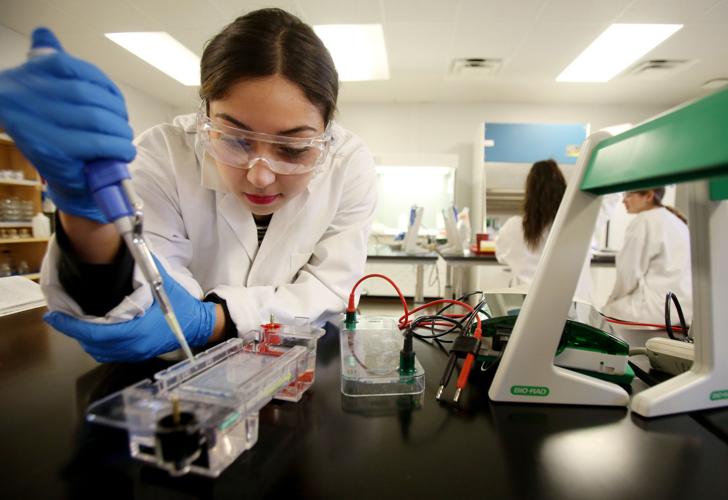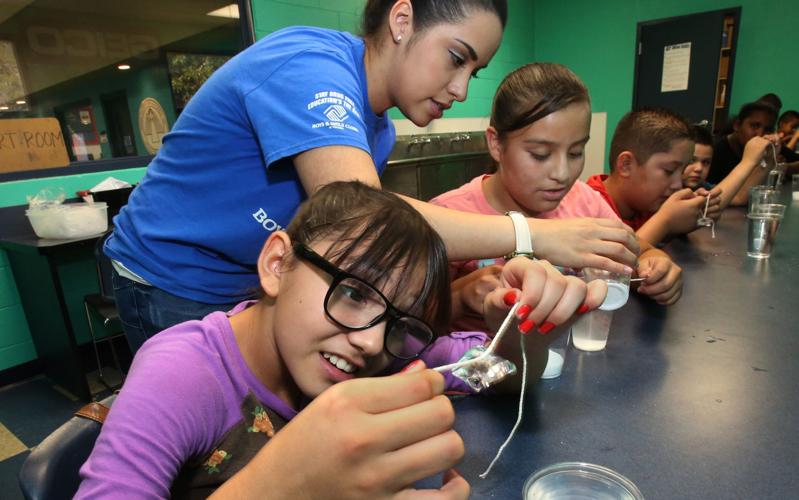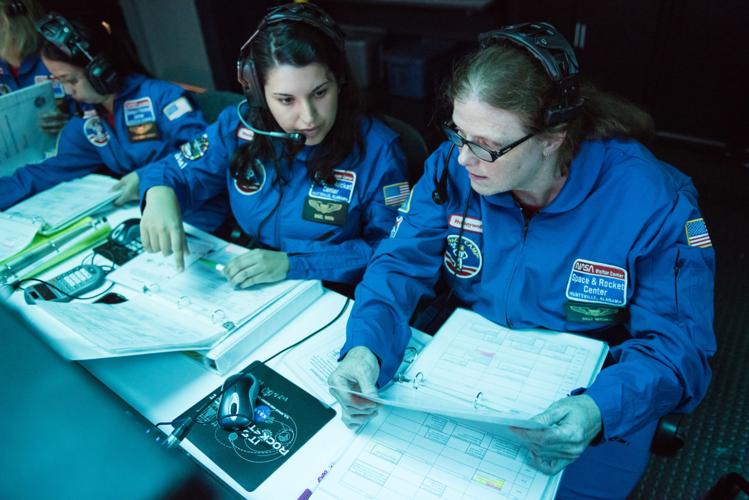The worlds of science, technology, engineering and mathematics aren’t just for boys.
But, according to new research conducted for Junior Achievement, a national non-profit that teaches students about financial literacy, work readiness and entrepreneurship, only 11 percent of teen girls ages 13-17 are drawn to non-medical STEM careers versus 36 percent of boys.
Various factors contribute to this, including lack of exposure to female role models, girls’ cultural expectation to nurture, societal norms and marketing to name a few.
Local experts working to close the gap say it’s important to draw more diversity into the STEM industries.
“We should care because the solutions to deal with water and energy issues — some of the most important issues of our time — are locked in the students we are not currently drawing into the STEM fields,” said DaNel Hogan, director of the STEMAZing Project, a local program dedicated to empowering pre-K to 12th grade educators to enhance and improve their STEM curriculums. “It is only with diverse teams of scientists and engineers that the creative innovations required for a sustainable future will be unlocked.”
MAKING AN IMPACT
Girls interested in STEM tend to lean toward the medical and dental fields rather than engineering or technology.
“Research has shown that because of cultural beliefs and expectations, girls tend to be drawn to fields and careers where there is a clear link to helping people or making the world a better place,” said Jill Williams, director of Women in Science and Engineering at the University of Arizona. “This helps explain why medical-related STEM careers have greater female participation. In these fields, the link between science, math and technology and helping people is more obvious than in non-medical fields.”
But, STEM careers, not just the medical ones, have a huge impact on society, and that needs to be conveyed to girls — and all people — to appeal to their desire to help, said Chuck Zaepfel, director of the Southern Arizona District of Junior Achievement.
“It’s not back in the back room with beakers,” Zaepfel said. “You’re actually making a difference to save lives like in medical research, and if you’re a scientist working with NASA, the research our space program has brought to every day lives is tremendous.”
The way STEM is often marketed, it’s hard to see all of the ways it can benefit people.
“You only need to take a walk down the toy aisle at your local toy store to see how different types of toys and activities are marketed toward boys and girls,” Williams said. “As children proceed through the educational system, we also know that boys are encouraged to pursue STEM fields to a greater degree than girls are. This is most often not intentional on the part of educators, but rather patterns that are adopted subconsciously over time.”
Lack of exposure to STEM and what careers are out there at an early age is also a contributing factor, says Czarina Salido, program director of Taking Up Space.
“A lot of people get stuck in their box thinking that STEM is for geeky kids stuck in front of a computer or in a lab but there are all kinds of jobs, even working for automotive shops,” Salido said. “There are tons of different aspects. It has to do with exposure, just not being aware of the type of things that are out there or the opportunities.”
PROGRESS
Mabel Rivera, a teacher at Innovation Academy, a K-5 STEM school in the Amphitheater School District, says in some ways, it’s starting to turn around.
“You’re starting to see more women in STEM fields, but the fact that we still have to make videos or say ‘look at these women in STEM’ means we still have a long ways to go,” Rivera said.
Rivera, who will be teaching second grade next school year, was one of 200 teachers from across the globe selected to go to space camp in Huntsville, Alabama, through the Honeywell Educators at Space Academy. The program seeks to help educators learn new ways to bring science, technology, engineering and math to the classroom next fall.
Since many children don’t have exposure to female role models in a STEM career, Rivera hopes to bring professionals to her classroom to talk about their careers and the difficulties they had in getting there.
Zaepfel from Junior Achievement says children are influenced most by parents, social and general media, teachers and classroom.
“Picture books, films and other activities that feature strong female characters, who show the ability to persevere through challenges, and pursue STEM fields and careers can go a long way in breaking down gender stereotypes,” added Williams.
Since children begin forming their STEM identities early on, Hogan says they need exposure to STEM early and often.
“This means STEM experiences for all of our students, too,” Hogan said. “Far too many STEM opportunities are given and available to only our students who come from mid- to high-socioeconomic households. We need all of our students, including girls and under-represented minorities to be engaged in STEM learning.”
Most of the work Hogan does with STEMAZing is focused on helping early childhood and elementary school educators do a better job engaging students with STEM lessons and activities.
“Recent research shows that by age 6, girls are 20 to 30 percent less likely than boys to see their own gender as ‘really really smart,’ and this self-perception leads to girls disengaging from activities that they associate with high inherent intelligence, such as math and science,” Williams said.






